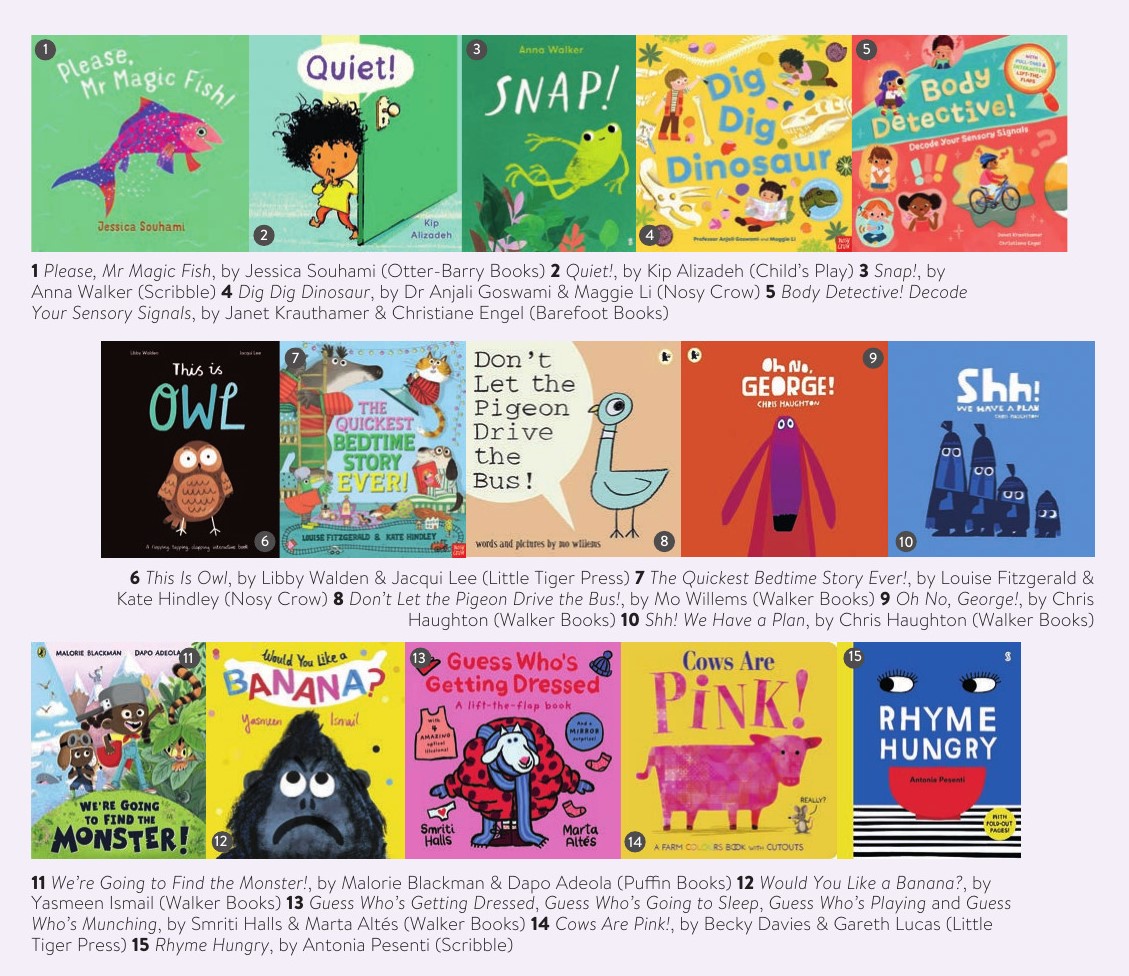Both educational and entertaining, interactive books are an invaluable tool in our efforts to support children’s early literacy, says Phoebe Demeger…
Few books exemplify the power of the shared reading experience quite like interactive books for children. Whether you read them aloud to a group or enjoy them one-on-one, they possess the ability to create meaning and humour, invite verbal or physical engagement and build empathy.
They even demonstrate how a book is put together through an eclectic mix of techniques. Here are some of my favourite examples…
Fairy tales and traditional tales are frequently some of the earlier encounters that young children have with literature – by design these stories are often particularly engaging and memorable due to their repeated and predictable story shapes.
A book like Please, Mr Magic Fish is a strong example of this. The main characters visit a magical wish-granting fish four times, calling out the repeated songlike refrain “Please, Mr Magic Fish, will you grant us one more wish?”.
Invite your audience to join in with this, while also tracing the verbal and visual differences between each fish encounter – the sea growing stormier, the fish getting angrier, etc.
Sound effects and onomatopoeia are another key way of inviting interaction from young readers. Quiet! follows a young child through a day in the life at home – they move from room to room, accompanied by the refrain “Sssh! Listen, what’s that noise?”, and within each room the onomatopoeic sounds of each object – the “rumble burble” of the kettle, the “brrmm zooom” of the toy car – appear written next to that object.
Quiet! is a lovely book for speaking to the experiences of a young child and building awareness of the built environment.
Similarly Snap!, told entirely in onomatopoeia, is great for exploring environmental sounds, while also encouraging predictions through rhyme and repetition: in one example of this soundscaped adventure, our hero, Frog, “tap tap tap”s on a crocodile’s snout, which on the next spread erupts with a “SNAP!”.
Interactive elements can be a useful tool in information books, encouraging embodied engagement with the subject matter.
Dig Dig Dinosaur takes this perennially popular topic and incorporates repetition, descriptive vocabulary and peep-through lift-the flap elements. This allows young children to guess which dinosaur they’re going to unearth next.
Meanwhile Body Detectives is a helpful tool for exploring self-regulation and sensory signals: this interactive board book uses flaps, pull-tabs and activities to encourage young children to interpret their body’s sensory cues, such as hunger or needing the toilet, to name their feelings and how to act upon them.

Some interactive books for children take things a step further and playfully illuminate the notion of a book as a physical item to interact with while still telling a story. This Is Owl makes a great read-aloud: using direct address, it introduces the audience to an owl and invites them to interact with the character by calling aloud, tickling, tipping and turning the book, and more.
Another example of this, recalling the classic Book With No Pictures is The Quickest Bedtime Story Ever. This speaks directly to the reader and invites them to take part in interactive instructions – a silly vocal warm-up, a big stretch, making sure to tuck every teddy in – during the wind-down towards bedtime.
It would be remiss not to mention Don’t Let the Pigeon Drive the Bus!, a fourth-wall-breaking modern classic about persuasion, in which an increasingly desperate pigeon uses a variety of rhetorical tactics to convince the reader to let him drive the bus.
Interactive, metafictive books like Pigeon introduce even the youngest reader to the concept of writing with a purpose, and the existence of an audience.
In a more subtle, but no less effective way, Chris Haughton’s picturebooks use repeated and/or patterned text as an exposition of how we construct narrative and meaning.
The author builds both tension and humour through repeated refrains and either meeting or subverting expectations: in Oh No, George! we have the refrain “What will George do?” followed by a spread of inevitable naughtiness (accompanied by the exclamation “Oh no, George!”); and in Shh! We Have a Plan, the tension builds as the bird-catchers count “Ready one…ready two…”, followed by an equally inevitable visual mishap.
These books brilliantly establish an easily followable pattern of “action equals consequence”.
A few more contemporary examples of books that encourage engagement through repetition are We’re Going to Find the Monster!, a vibrant adventure in which two siblings traverse a range of imaginary landscapes to a cumulative refrain which simply asks to be joined in with: “Over the shimmering ocean… Up the huge, high mountain… Through the deep, dark jungle… We’re going to find the monster!”
I also love the Green Eggs and Ham-esque Would You Like a Banana?, in which an unseen – and very patient – narrator tries to convince a hungry gorilla to have a banana, to be met with the repeated line “No, I won’t eat a banana.” Great fun to read aloud and, like Don’t Let the Pigeon…, good for exploring persuasive writing.
Even the youngest of readers get to enjoy the subversive humour of interactivity through the format of board books.
In the Guess Who’s… series, clever optical illusions invite the reader to guess which animal is hiding behind each flap, with the patterned rhyming text providing a clue to the answer: “Who’s put on this spotty coat? Is it Cat? No! It’s…[spoiler!]”
Meanwhile, Cows Are Pink! uses cutouts to paint farmyard animals in unexpected colours; the reader must lend the exasperated narrator a hand and help put things right.
And finally, the brilliant Rhyme Hungry is a verbal and visual treat filled with rhyming wordplay, and sees fold-out pages transform food items into unexpected things – a cheese toastie becomes a cheese ghostie, with friendly spirits made from melted cheese.
Phoebe Demeger is a librarian at the Centre For Literacy In Primary Education.
